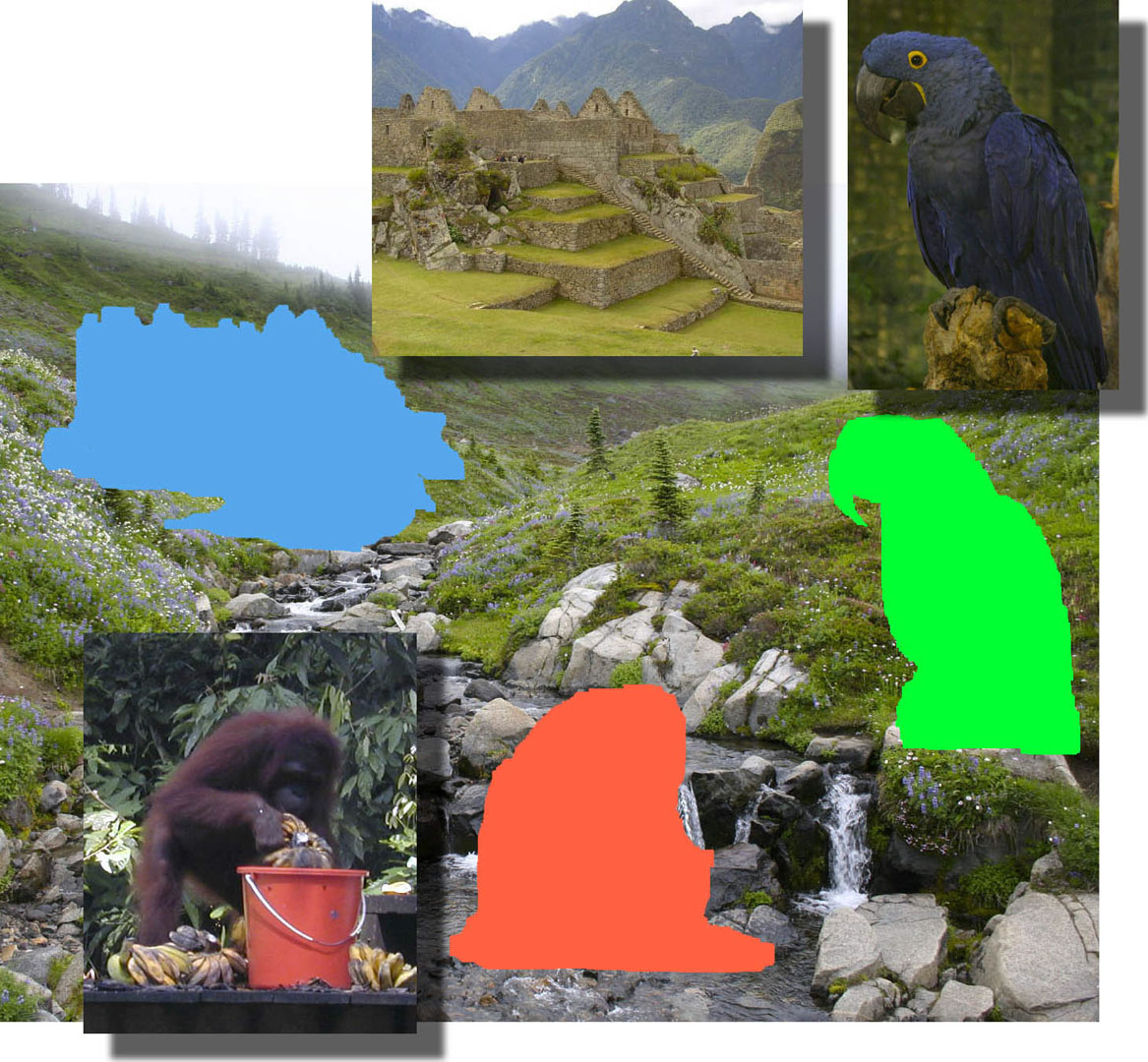“A perception-based color space for illumination-invariant image processing” by Chong, Gortler and Zickler
Conference:
Type(s):
Title:
- A perception-based color space for illumination-invariant image processing
Presenter(s)/Author(s):
Abstract:
Motivated by perceptual principles, we derive a new color space in which the associated metric approximates perceived distances and color displacements capture relationships that are robust to spectral changes in illumination. The resulting color space can be used with existing image processing algorithms with little or no change to the methods.
References:
1. Aczel, J., Falmagne, J.-C., and Luce, R. D. 2000. Functional equations in the behavioral sciences. Math. Japonica 52, 3, 469–512.Google Scholar
2. Barnard, K., Martin, L., Funt, B., and Coath, A. 2002. A data set for colour research. Color Research and Application 27, 3, 147–151.Google ScholarCross Ref
3. Berns, R. S., Alman, D. H., Reniff, L., Snyder, G. D., and Balonon-Rosen, M. R. 1991. Visual determination of suprathreshold color-difference tolerances using probit analysis. Color Research and Applications 16, 5, 297–316.Google ScholarCross Ref
4. Castillo, E., and Ruiz-Cobo, M. R. 1992. Functional Equations and Modelling in Science and Engineering. CRC.Google Scholar
5. Chalmers, A. N., Soltic, S., and Jammalamadaka, R. 2007. A case for a ciecam02 colour appearance space. Manukau Dept. ECE Conf. Papers.Google Scholar
6. Chong, H. Y., Gortler, S. J., and Zickler, T. 2007. The von kries hypothesis and a basis for color constancy. ICCV.Google Scholar
7. Chong, H. Y. 2008. Geometric methods in perceptual image processing. Harvard University PhD Thesis (May). Google ScholarDigital Library
8. Ebner, F., and Fairchild, M. D. 1998. Development and testing of a color space (ipt) with improved hue uniformity. Proc. 6th Color Imaging Conf., 8–13.Google Scholar
9. Fairchild, M. D. 2005. Color Appearance Models, 2nd ed. Wiley-IS&T.Google Scholar
10. Fechner, G. T. 1877. In Sachen der Psychophysik. Leipzig.Google Scholar
11. Finlayson, G., Drew, M., and Funt, B. 1993. Diagonal transforms suffice for color constancy. In ICCV93, 164–171.Google Scholar
12. Foster, D. H., Nascimento, S. M. C., and Amano, K. 2004. Information limits on neural identification of coloured surfaces in natural scenes. Visual Neuroscience 21, 331–336.Google ScholarCross Ref
13. Georgiev, T. 2006. Covariant derivatives and vision. In ECCV ’06, Springer-Verlag, Part IV, 56–69. Google ScholarDigital Library
14. Judd, D. B., and Wyszecki, G. 1975. Color In Business, Science, and Industry. John Wiley and Sons.Google Scholar
15. Kimmel, R., Elad, M., Shaked, D., Keshet, R., and Sobel, K., 2002. A variational framework for retinex.Google Scholar
16. Luce, R. D. 1993. Let’s not promulgate either fechner’s erroneous algorithm or his unidimensional approach. Behavior and Brain Sciences 16, 155–156.Google ScholarCross Ref
17. Luo, M. R. 2006. Colour difference formulae: Past, present and future. CIE Expert Symposium.Google Scholar
18. McCann, J. J. 2005. Do humans discount the illuminant? Proc. SPIE 5666, 9–16.Google ScholarCross Ref
19. Moroney, N., Fairchild, M. D., Hunt, R. W. G., Li, C., Luo, M. R., and Newman, T. 2002. The ciecam02 color appearance model. In Color Imaging Conference, 23–27.Google Scholar
20. Palmer, S. E. 1999. Vision Science: Photons to Phenomenology. MIT Press.Google Scholar
21. Papandreou, G., and Maragos, P. 2007. Multigrid geometric active contour models. IEEE Trans. on Image Processing 16, 1 (Jan.), 229–240. Google ScholarDigital Library
22. P?rez, P., Gangnet, M., and Blake, A. 2003. Poisson image editing. SIGGRAPH 22, 3, 313–318. Google ScholarDigital Library
23. Resnikoff, H. L. 1975. Differential geometry and color perception. Journal of Mathematical Biology 2, 4, 97–131.Google Scholar
24. Resnikoff, H. L. 1989. The Illusion of Reality. Springer-Verlag. Google ScholarDigital Library
25. Sharma, G., Wu, W., and Dalal, E. N. 2005. The ciede2000 color-difference formula: Implementation notes, supplementary test data, and mathematical observations. Color Research and Application 30, 1, 21–30.Google ScholarCross Ref
26. Vos, J. 2006. From lower to higher colour metrics: a historical account. Clinical & Experimental Optometry 86, 6, 348–360.Google Scholar
27. West, G., and Brill, M. H. 1982. Necessary and sufficient conditions for von kries chromatic adaptation to give color constancy. Journal of Mathematical Biology 15, 2, 249–258.Google ScholarCross Ref
28. Witt, K. 1999. Geometric relations between scales of small colour differences. Color Research and Applications 24, 2, 78–92.Google ScholarCross Ref
29. Wyszecki, G., and Stiles, W. 1982. Color Science: concepts and methods, quantitative data and formulae. Wiley.Google Scholar





